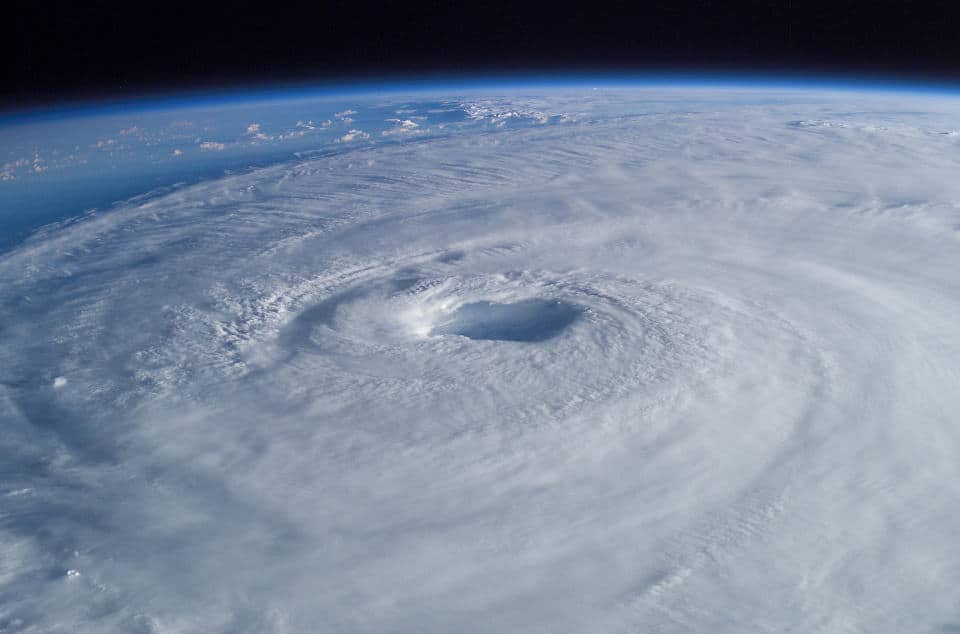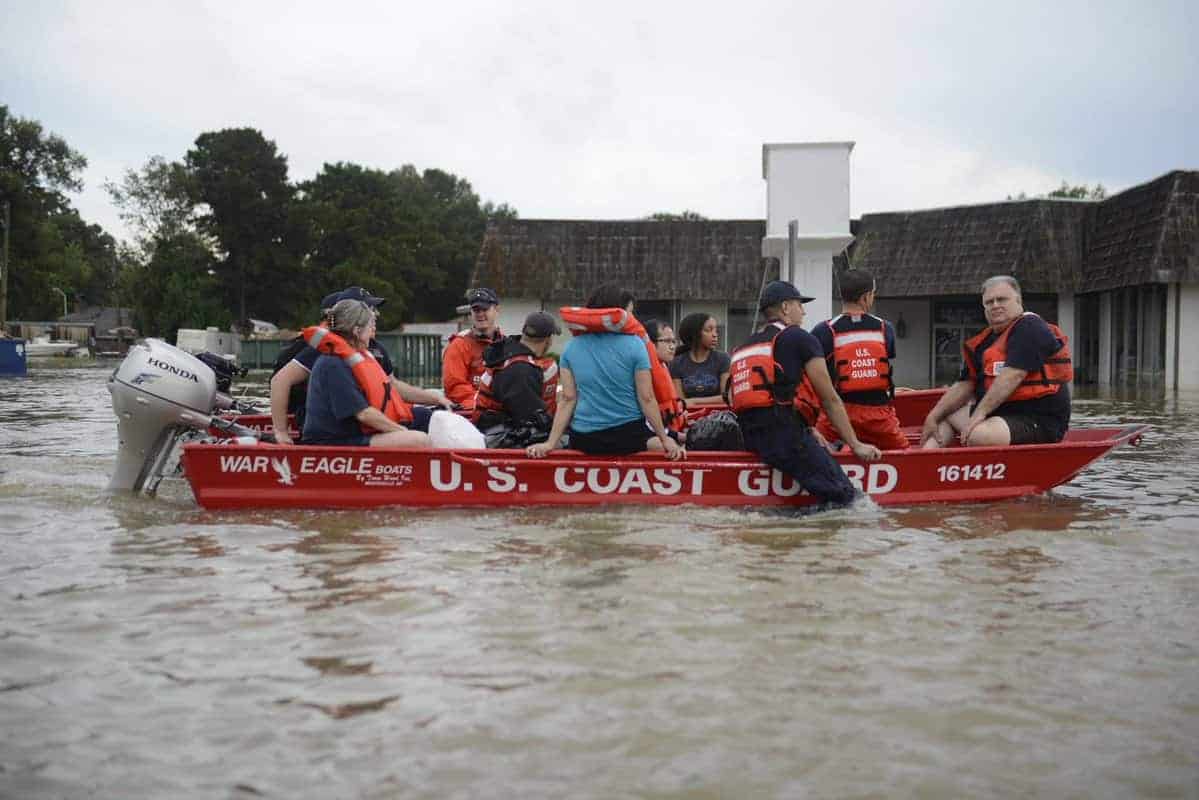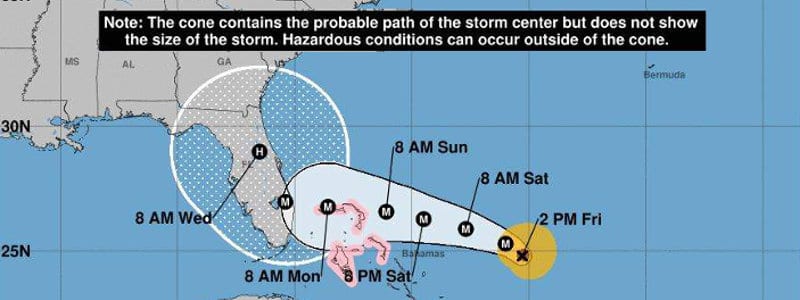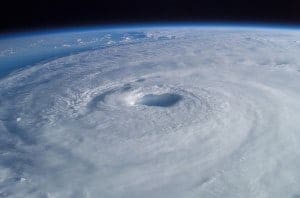
Hurricane Isabel was the strongest, deadliest, most costly hurricane of the 2003 Atlantic hurricane Season
Hurricanes are dangerous, powerful weather phenomena that bring extreme winds, heavy rain, storm surge, and other associated weather events. They belong to a family of storms call tropical cyclones and include tropical depressions, tropical storms, hurricanes, and major hurricanes. When a weather system over an ocean or sea gains certain characteristics, it becomes a tropical depression. Low pressure within the systems allows it to gain energy from the warm water and from moist humid air and strengthen into a tropical storm. Tropical storms have winds up to 73 MPH and hurricanes from 74 to more than 150 MPH. Hurricane Patricia had winds that reached 215 MPH.
Learn about Hurricanes and Hurricane Safety at the NOAA National Hurricane Center.
Anyone who lives near the Atlantic or Gulf Coast should prepare for the eventual landfall of hurricanes and other tropical cyclones. Hurricanes that make landfall along the Pacific Coast of the United States are rare, but they have happened.
Know Your Risk
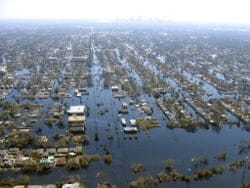
Flooding after Hurricane Katrina
(NOAA Photo)
If you live in any Atlantic or Gulf Coast state, chances are that a hurricane could significantly impact your area. The three main risk factors are storm surge, inland flooding, and extreme winds.
Even if you are far enough inland that hurricane-force winds don’t reach you, other effects of the storm might. Extreme wind is a factor, but storm surge and flooding take more lives and damage more property. Tornadoes spawned by the tropical cyclone are short lived, but can destroy a home in seconds.
Power outages affect wide areas and leave millions of utility customers without power. Utility crews take days and sometimes weeks to restore power for all customers. Basements flood without sump pumps. Hot humid air promotes mold growth. Food spoils. Hot, humid weather can make staying in your home unbearable. Standby generators are the best resource to guard against long term outages.
Learn about the risks posed by hurricanes and tropical storms where you live.
Evacuation routes choked with residents fleeing the storm turn travel into a nightmare. Learn your evacuation route if you live within an evacuation zone.
Your Evacuation Plan
If you live in an area prone to flooding or storm surge, or if your home is not built to withstand a hurricane, you should have a plan to evacuate. Take the time to learn designated evacuation routes. Drive the route to become familiar with it.
Write down your evacuation plan and make a list of what you will take with you. Remember that property and material possessions are replaceable, but lives and memories are lost forever. When authorities issue evacuation orders, pack up your family, pets, and evacuation kit, and leave for a safe place.
Once a hurricane nears land or makes landfall, travel becomes difficult at best and often impossible. Leave well ahead of the storm to avoid being caught in long traffic delays. A plan is no use if you don’t use it or others don’t know about it. Share it with your family and friends. When the time comes, put it into action.
Disaster Supplies
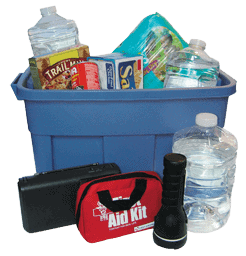
Keep a Portable Emergency Kit Stocked and Ready
(image via Ready.gov)
Goods and services are in short supply after a hurricane. Assemble a disaster supply kit that includes non-perishable food and water for one week. Remember that once the storm hits, pharmacies may be closed or have short supplies because their supply chain is cut off. Purchase enough prescription medicine to last at least one week.
Remember that everyone has different needs. Seniors, infants, toddlers and young children, and pets. Keep them in mind when you’re purchasing supplies and putting together your kit so that everyone is fed, has their medicine, and has enough water for drinking and personal hygiene.
Don’t forget that portable generators need a fresh supply of fuel. Store enough stabilized fuel to last a full week or longer if you can. The more power you use, the more fuel you use. Plan accordingly.
Insurance
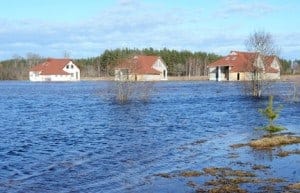
“It Never Flooded Here Before” Hurricanes and Tropical Storms can cause a flood anywhere they strike.
Don’t wait for a hurricane to threaten before calling your agent. Homeowner policies DO NOT cover flooding. Damage from flooding is extensive and costly to repair. Talk to your agent. Make sure that your home is covered at replacement cost and includes wind damage. Carry a separate flood insurance policy. Your current insurance company may offer this, your agent may have information, or you can purchase a policy through the National Flood Insurance Program.
You must purchase well in advance of a hurricane, tropical storm, or other weather factor that may cause a flood and damages your home. If you live in an area prone to flooding, purchase now and continue your policy as long as you live there.
Strengthen Your Home
Modern construction methods make homes safer and capable of withstanding a hurricane. Even though a hurricane may cause significant damage, your home has a better chance of weathering the storm. Refitting the structural elements make it possible for the roof structure to remain attached to the framing, and for the framing to stay attached to the foundation.
When a storm threatens, cover the windows with 3/4-inch plywood to prevent breakage. Purchase the plywood ahead of time, cut it to size, and have the holes drilled for the long screws that reach through the plywood and into your wall frame. The garage door is most vulnerable opening. Install a hurricane-rated door.
Remove all loose items from your yard and store them indoors. Trim trees of dead or loose branches. Have a certified arborist inspect your trees and remove any that are weakened by rot or poor root systems.
Check on Your Neighbor
We often rely on our neighbors for help and assistance. Talk to your neighbor about your plan for a hurricane or other disaster. Help them put together a plan and disaster kit if they need assistance. When evacuation orders are issued, make sure they know about the evacuation and are prepared to leave. Outline the evacuation route for them.
Point them toward resources that you know about. FEMA websites, Ready.gov, and other online resources. Let them know where to shelter if they don’t know where to go. After the storm and when it’s safe to go outside again, check on them to make sure they don’t need help. Encourage others to help their neighbors too.
Be aware that when people move to a coastal area, they may not realize the importance of hurricane preparedness or understand all the risks.
Complete Your Hurricane Plan
The time to prepare is before a hurricane threatens. The supplies you need are easily obtained. Decisions are made calmly and with forethought. Disaster kits are assembled and ready. You know what to do and when to do it. There’s just one last step.
Write it down.
Putting your plan in writing helps to solidify the thought process. Though you may have a good idea what to do, the lists and routes and decisions made in advance will help guide you through the hours when everyone else is scrambling to get it all done. You’ll have the plywood for your home and avoid long lines at the home center. The evacuation route is known and because you were ready in advance, you can drive out of town without the long delays caused by everyone who waited until the last minute.
Tip: Bookmark important resources on your smartphone including local government and news. They will keep you up to date with current information. Very often, cellular phones are the best method of communication after a disaster. Visit the National Hurricane Center to keep track of the storm.
Everyone in your family is ready. Your neighbors are ready. Extended family and friends know what your plans are and how you will contact them during and after the storm.
Print the plan and keep it where it is readily accessible and not forgotten. Store a copy on your smartphones so it remains accessible before, during, and after the storm.

